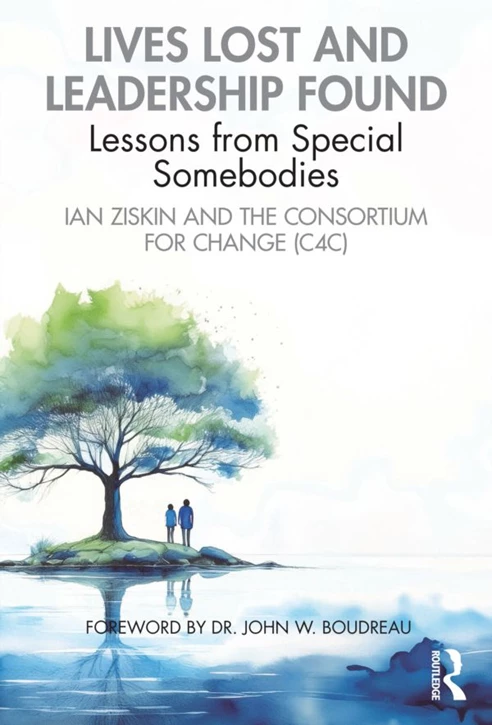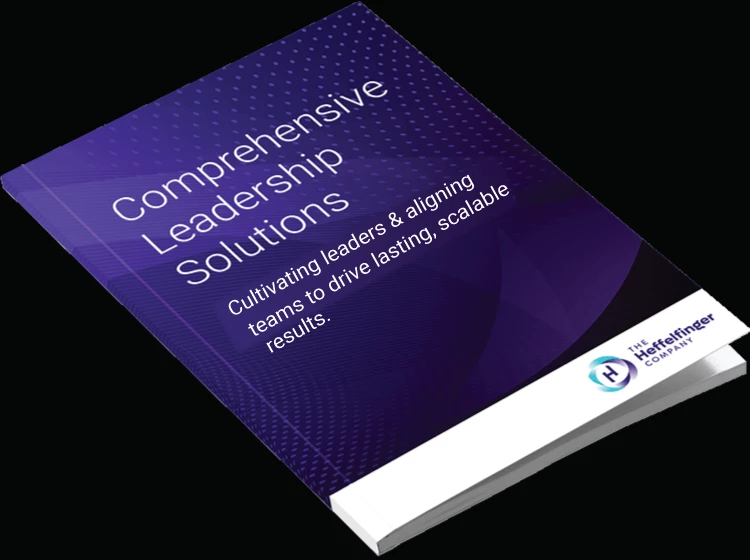"It is not the strongest of the species that survives, nor the most intelligent. It is the one that is most adaptable to change." ~ Charles Darwin
Introduction
This blog is the third in a series educating our readers on the multiple aspects of Leveraging the Power of Disruption (i.e., global pandemic, economic, demographic, social, technological, environmental shifts, political dynamics, and various Industry and cross-industry dynamics).
Blog #1 – Unleashing the Power of Disruption: Reimagining Your Organization (11/12/2020). Our introductory blog presented the problems and opportunities we face, plus an introduction to a Living Systems Framework for Organization Design.
Blog #2 – Unleashing the Power of Disruption: Reimagining Your Organization's Strategy and Teams Together (12/14/20). A discussion of how Teaming is a core element of strategy and design component of adaptive organizations.
A living organizational system's ability to thrive over-time is dependent on its ability to adapt appropriately as external and internal environmental conditions change. This is true at all levels - individual, team, enterprise, and ecosystem. At its most basic, adaptability is about sensing and responding to one's external and internal environments.
Immediate examples of sensing and responding in 2020 include: state governments changing laws and systems to allow voters to vote virtually, Food giant Sysco loaning furloughed warehouse employees to grocery chains, The Cheesecake Factory converting their kitchens into multi-restaurant offerings. The lessons from these short-term adaptations may evolve into longer-term adaptations as organizations and institutions learn what they can release (let go of) and reinvent.
As we noted in our blog, Leveraging the Power of Disruption: Reimagining Your Organization's Strategy and Teams Together, the essential role of adaptive leadersis to create a clear context for aligned and coherent action. Adaptive leaders must also ensure coordination to promote behavior and decision-making that is consistent with organizational context.
Context is not static. It changes as the system changes. For leadership to "create" a clear context, they need to understand how their organization adapts and evolves.
This blog will share a Framework (The Adaptive Cycle of Development) to help leaders and organizations become adaptive and agile by assessing where they are in the cycle and understanding how to navigate their position to optimize performance. It will also help them recognize the transformative power of Releasing to Reinvent themselves and their organizations ultimately.
Overview of The Adaptive Cycle of Development
"As in nature, human organizations tend to transition through four natural stages of growth and development: Inventing, Innovating, Maturing, and Releasing. Each stage plays an essential role in building the system's foundation for growth.
The fourth stage – Releasing – allows the system to reinvent (renew, redesign, and reorganize), thus beginning its next cycle of succession. When a system is healthy, the cycles build to support increasing complexity, development, and growth – basically to foster the system's evolution. This evolution happens at all levels of the system – from us as individuals to our teams, our organizations, and our ecosystems.
As we cycle, we can get caught up in one stage or another – by trying to move too fast or by failing to adapt to changing environmental conditions. When we try to move too quickly, the result is inadequate development. When we fail to adapt to change, we become stuck, unprepared, and irrelevant. Failure to develop and adapt results in failure to evolve. When we do not evolve, we die.
Let's dive a bit deeper into each stage of The Adaptive Cycle of Development.
The Adaptive Cycle of Development
INNOVATING Stage: Birth and Growth
The Innovating Stage allows an organization to prototype, experiment rapidly, and test new ideas, new forms, new products. Think start-up. Entrepreneurial spirit abounds; the focus is on growth and seizing opportunities often through disorganized resources. For organizations in the Innovating Stage, the competitive edge is their ability to thrive in environmental variation and capture shares in newly opened markets.
The good news at this stage is organizations are more flexible and able to pivot. This flexibility is due in part to a strong entrepreneurial drive that keeps internal controls and regulations weak. However, weak internal control and regulation tend to result in low stability.
As the organization develops and evolves, tension increases between a desire to remain entrepreneurial (fluid, unstructured, flexible, responsive) and the need for more professional business management (structures and systems ensuring consistency, predictability, control).
A danger at this stage is that as the organization grows and scales, leaders and employees who started with the organization may resist the idea of creating structures and processes to facilitate scaling the organization, potentially inhibiting the organization's ability to grow successfully.
MATURING:Stability and Control
As an organization evolves from Innovating to Maturing, it increases stability, control, and predictability. Its focus shifts to accumulating resources, such as managerial and marketing skills, knowledge, and inventions, and building infrastructure. All of this helps to buffer the organization from external variables so it can operate more efficiently.
For organizations in the maturing stage, their competitive edge lies in their ability to influence external variables (market shifts, etc.) through internal processes, systems, and controls. Examples of this include Walmart with its ability to scale its logistics, supply chain, and pricing models and Southwest Airlines with its standard processes across all systems, allowing it to scale across geographies without its competitors' added costs.
The danger is that, as internal control and bureaucracy increase, so does rigidity. Resilience and flexibility decline, and the organization becomes more vulnerable to disturbance. When we become overly focused on internal controls and standards at the expense of flexibility and stability at the expense of change, we get stuck in the maturing stage. When we get stuck in the maturing stage, we begin to fall or fail.
RELEASING: Disruption and De-structure
When disturbance exceeds an organization's resilience, there is a sudden increase in uncertainty and what seemed like a long period of predictable behavior abruptly ends and chaos ensues. Resources and energy that were bound up in the organization's structure are released or destroyed. The hope is that this will begin a rapid back-loop to a Reinventing Stage, where the released potential can be reorganized and renewed for new configurations.
Often, organizations resist releasing and try to respond to changes in the environment by iterating existing models and processes. To release the potential in an organization for transformation and reinvention, the organization needs to let go of ways of thinking and doing that no longer serve. It needs to de-structure configurations, forms, processes that are no longer useful or relevant and increasingly cumbersome and arduous.
This past year, many organizations have had to release ways of doing business from storefront to delivery, ways of working (from in-person to virtual) and releasing products and service offerings (from a full restaurant menu to a standard menu). The question here is, have they truly de-structured or just temporarily adopted.
(RE)INVENTING: Renewal and Reorganization
If the organization has been able to release effectively, a process of renewal and reorganization begins. Though the future may be uncertain, energy is high, and conditions are fertile for exploring new possibilities and experimentation with new ideas and configurations. The results can be new constellations and forms that generate a new and often unexpected Innovation stage as the organization begins its next cycle.
An immediate example of Reinventing in 2020 includes:
- State governments changing laws and systems to allow voters to vote virtually.
- Netflix and Amazon have demonstrated year over year the ability to Reinvent as their ecosystems evolve and change.
- Netflix went from renting movie via DVDs to online sales to creating content in-house.
- Amazon went from selling books online to becoming THE place to buy anything including food delivered just in time.
From Temporarily Adaptable to Adaptability as an Organization Capability
Create Adaptability as an Organizational Capability
Agile organizations (organizations that have adaptability as an organizational capability) are defined by their ability to react and adapt quickly to changing circumstances. They embrace a complex and unpredictable environment by being both customer and profit focused, adopting fast learning and decision cycles, and building a network of empowered teams and individuals enabled by technology and driven by a shared purpose.
“Agility is the ability to make timely, effective, and sustained organizational changes when and where it results in a performance advantage.” ~ Chris Worley
Conclusion
Knowing HOW Organizations Adapt has always been important but is even more so now. Understanding where your organization is in The Adaptive Cycle of Development will help you maximize your organization's ability to adapt and change. Leverage the Power of Disruption to your advantage and weather changes in your organization's ecosystem.
Being agile and adaptable is not sustainable without intentionality, organization design, and adaptive leadership.
Sally, James, and I advocate learning more about the conditions which cause organizations to thrive. We will be sharing more in upcoming blogs. You can always drop us a line or give us a call. We are calling our new partnership, “Implexiti.”
Written by
Sally, Lori and James
Supporting business leaders and HR/OD Leaders to transform cultures and transition through the Pandemic and beyond.
Sally B. Parker
216-408-1195
sally.bparker@timezeroenterprises.com
———
Lori Heffelfinger, MSOD, PCC & James Jackman, MSOD
310-543-7632 office
www.heffelfingerco.com

References:
- Navigating Uncertainty: Creating A Sense-And-Respond OrganizationBy Jardena London and Sally Breyley Parker, Org Design Forum Membership (2020)
- Structural Agility: Using Structure to Enable The Flow Of Value In Organizations By Jardena London By Sally Parker, Nadezhda Belousova, Laurie Reuben.
- Anatomy of Agile Enterprise By Janne J Korhonen
- The Agility Factor By Worley, Williams, and Lawler
- What is an Agile Organization By Betterteam July 16th, 2020
- Biomimicry Resource Handbook: A Seed Bank of Best Practices By Dayna Baumeister, Ph.D. Biomimicry 3.8.
- Panarchy Understanding Transformations is Human and Natural Systems By Lance H Gunderson and C.S. Holling
- Adaptive Enterprise: Creating and Leading Sense and Respond Organizations By Stephan H. Haeckel







